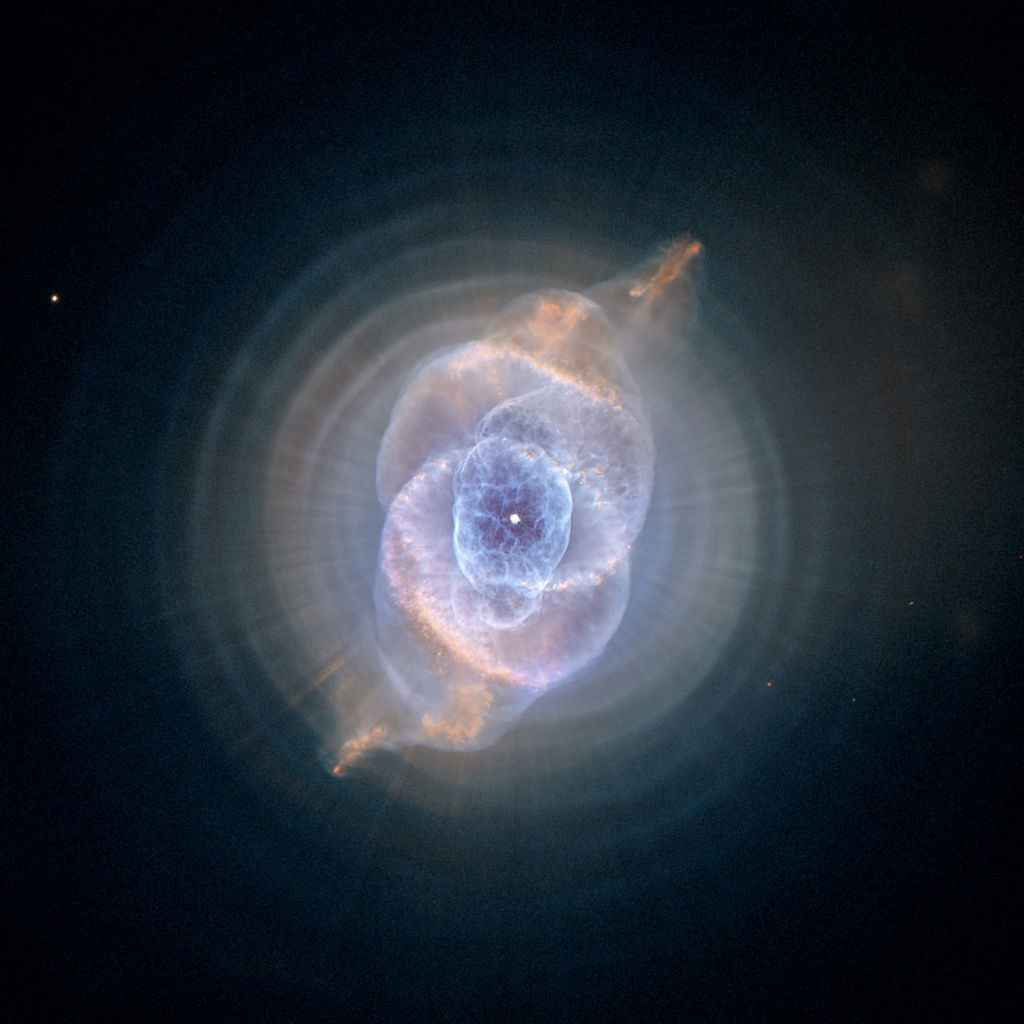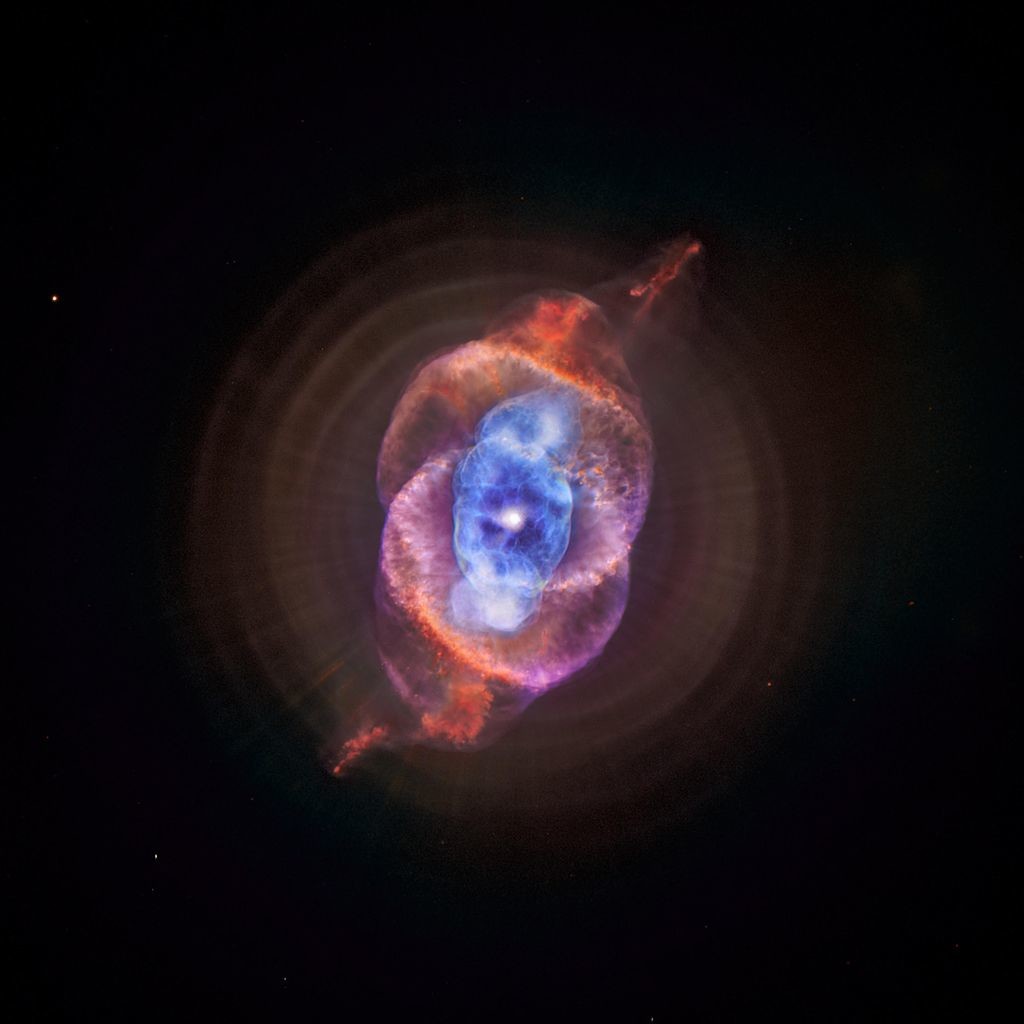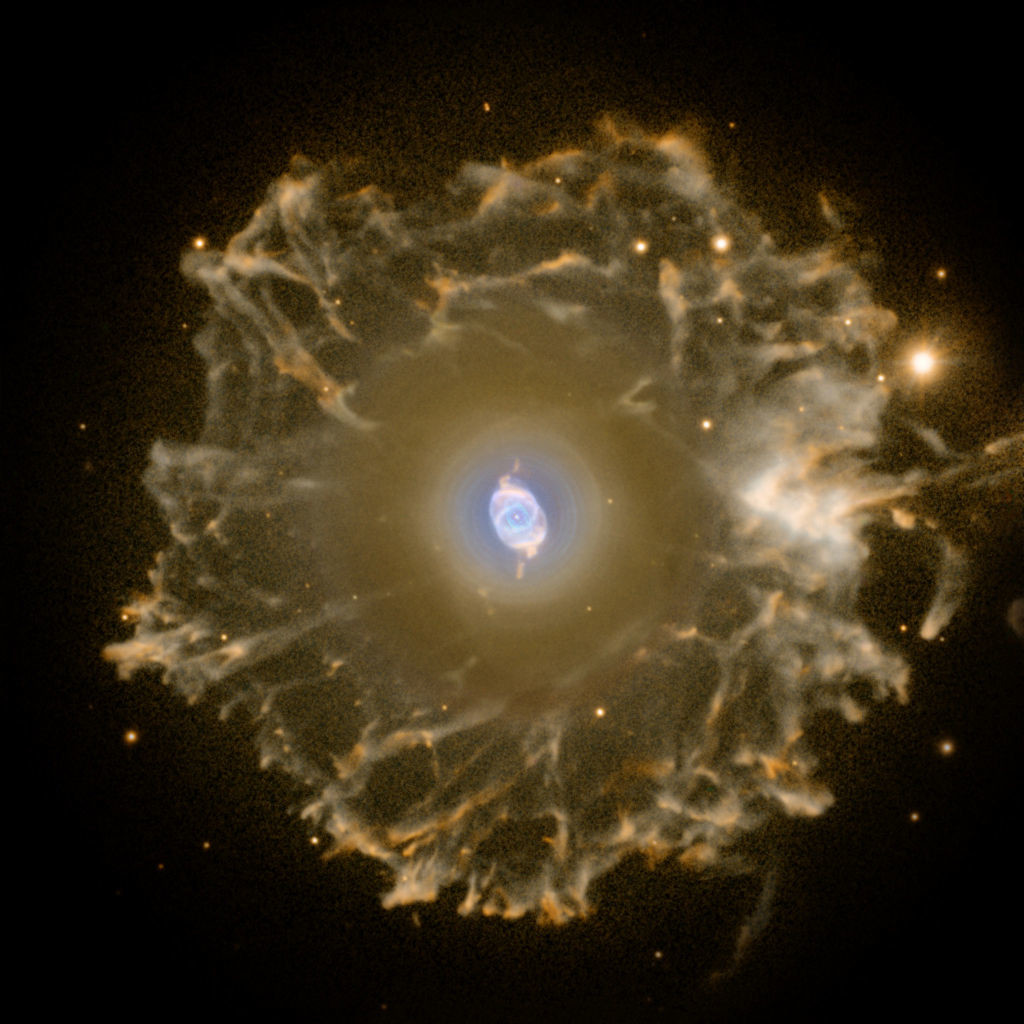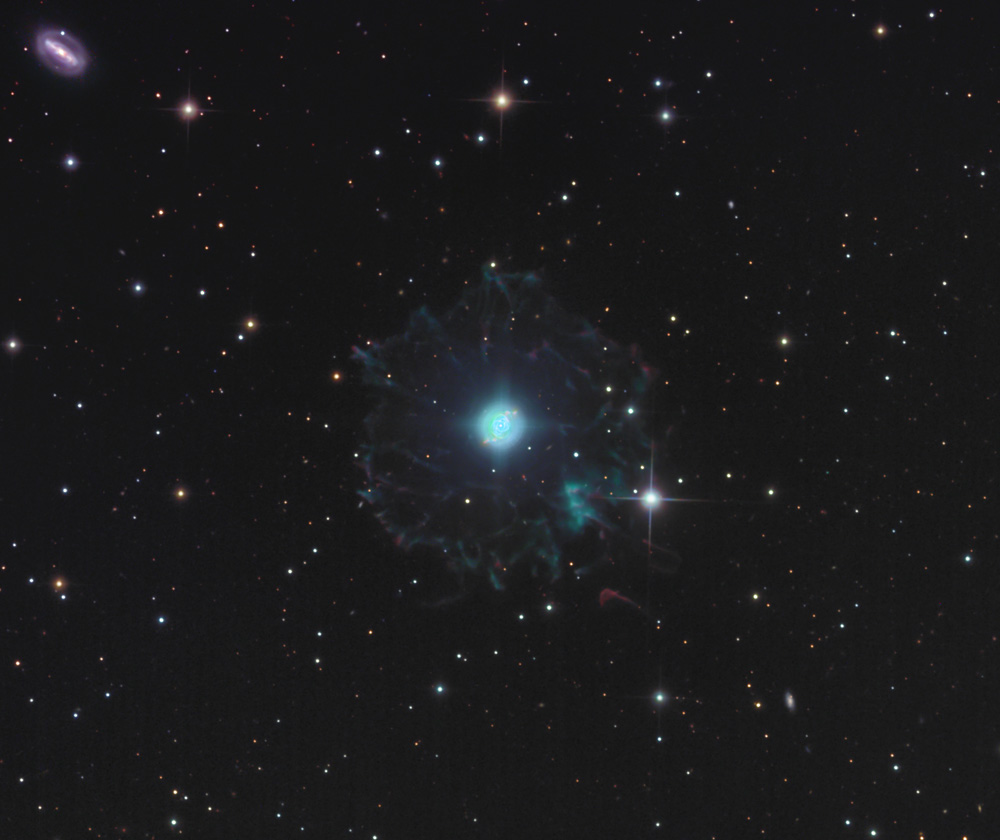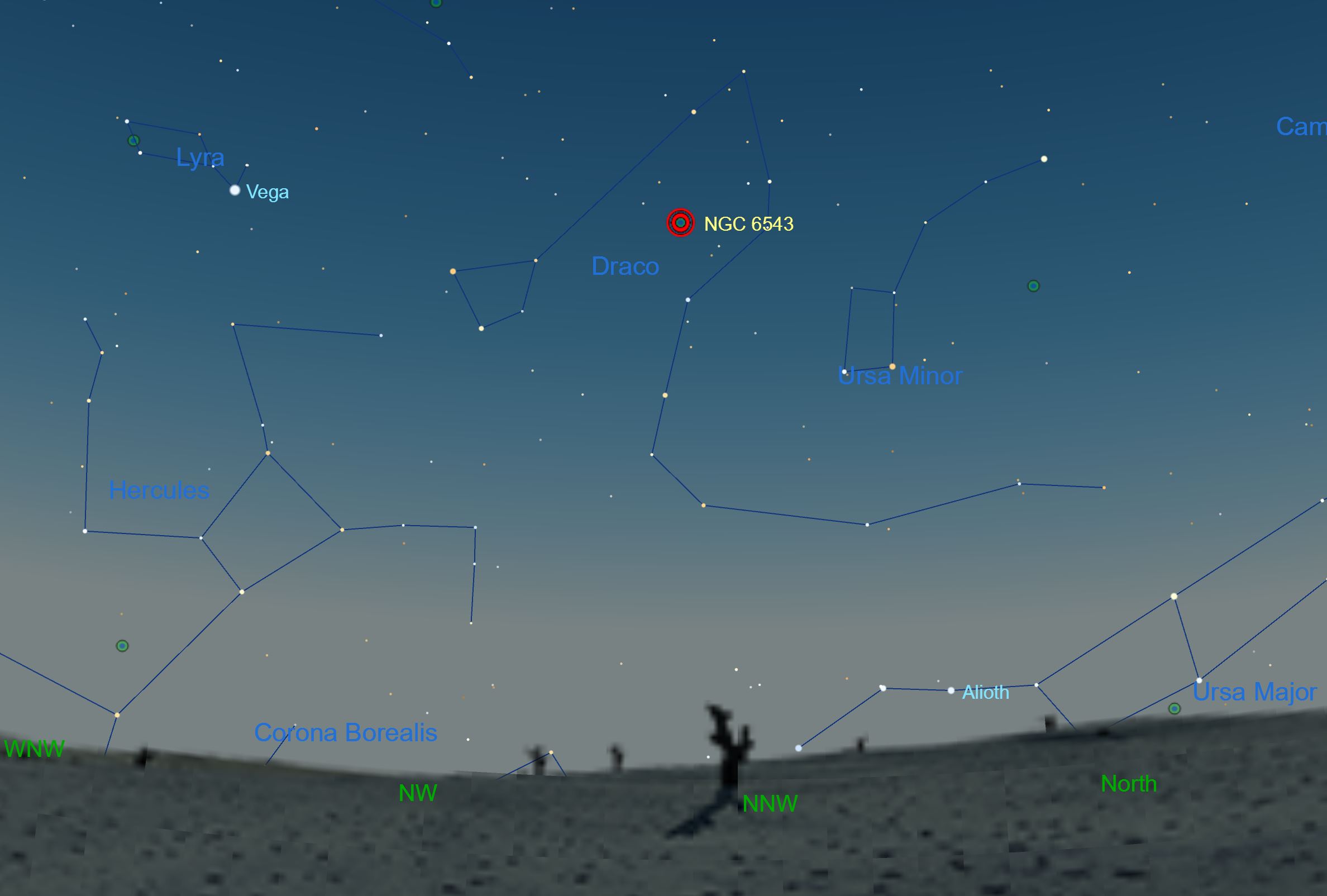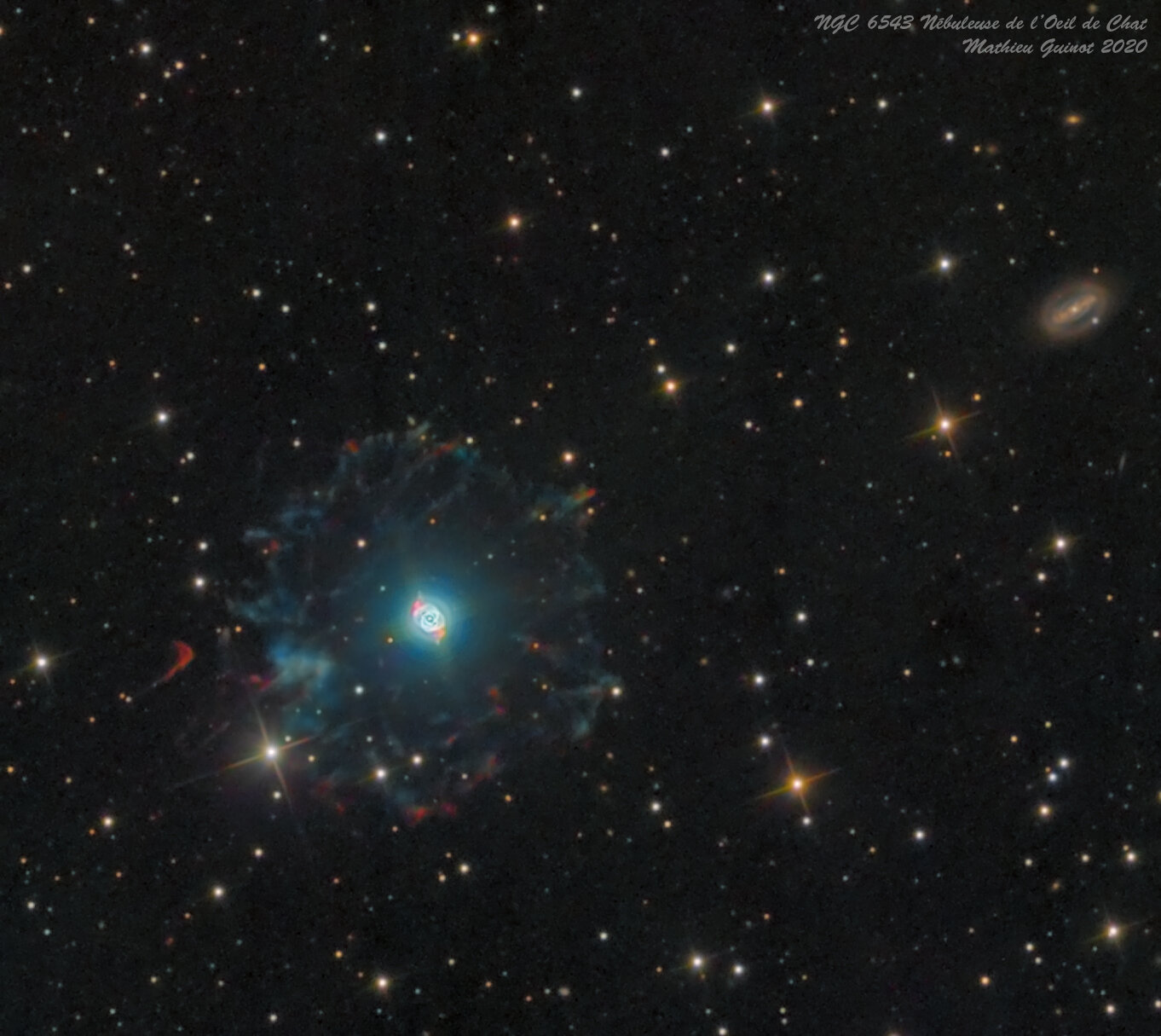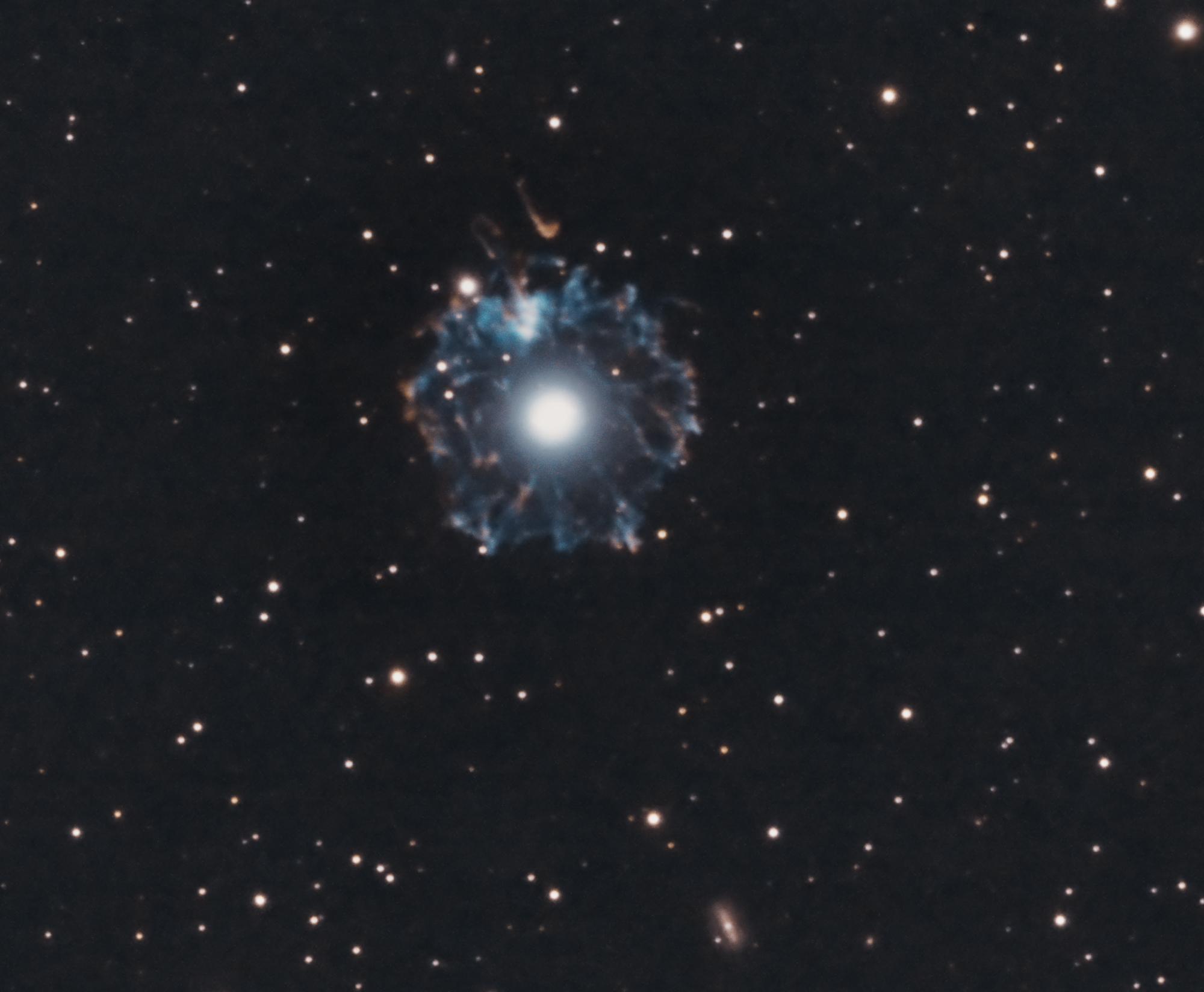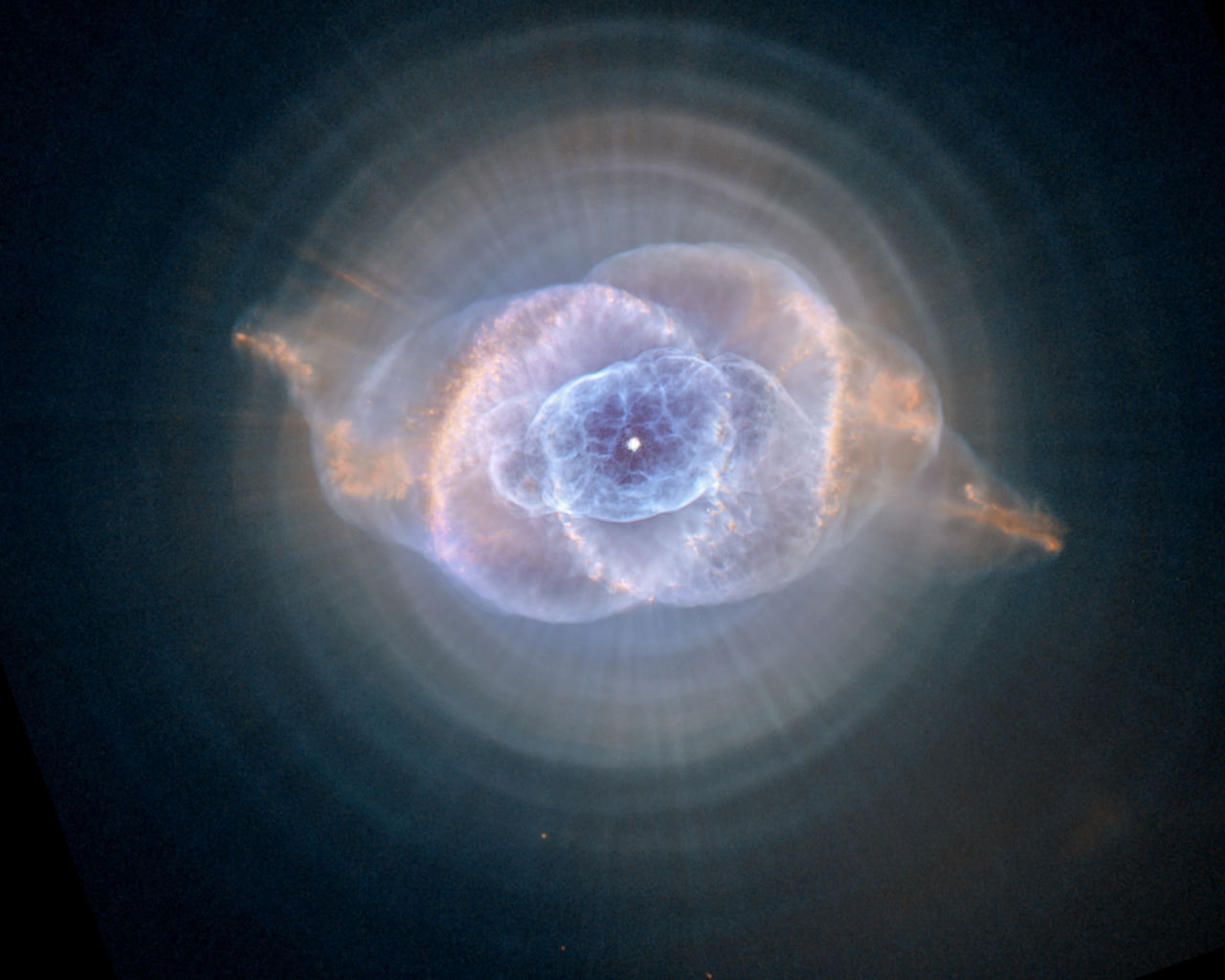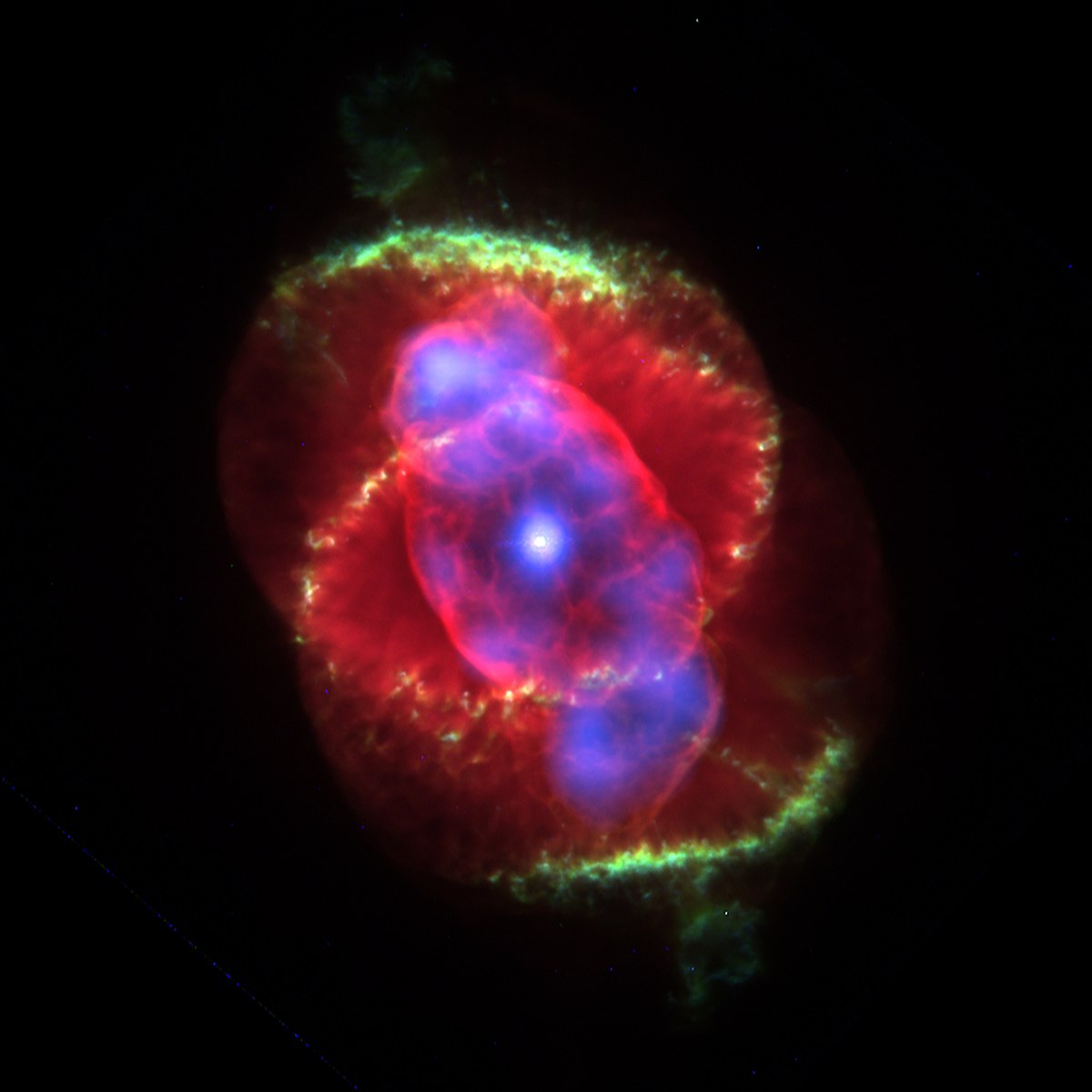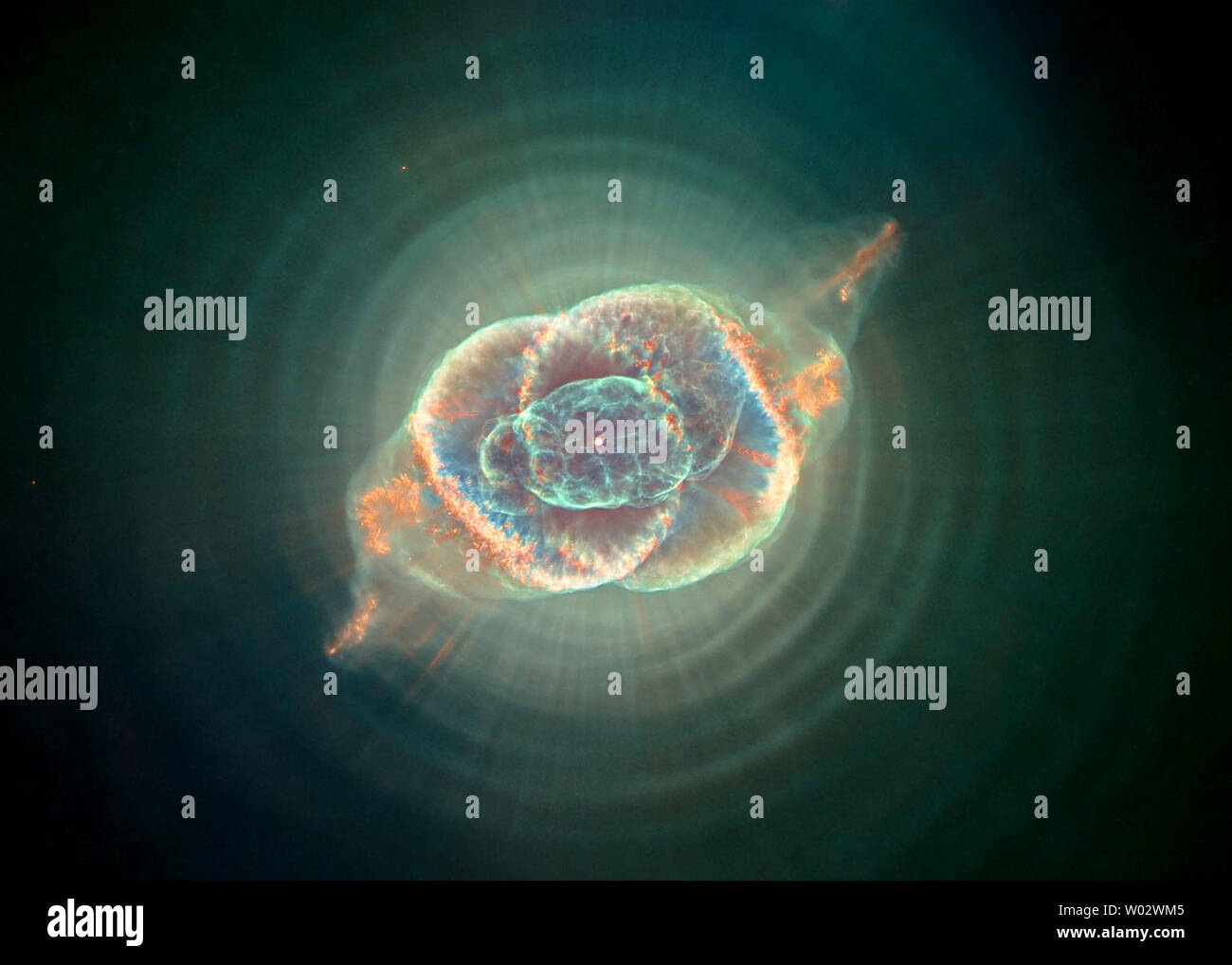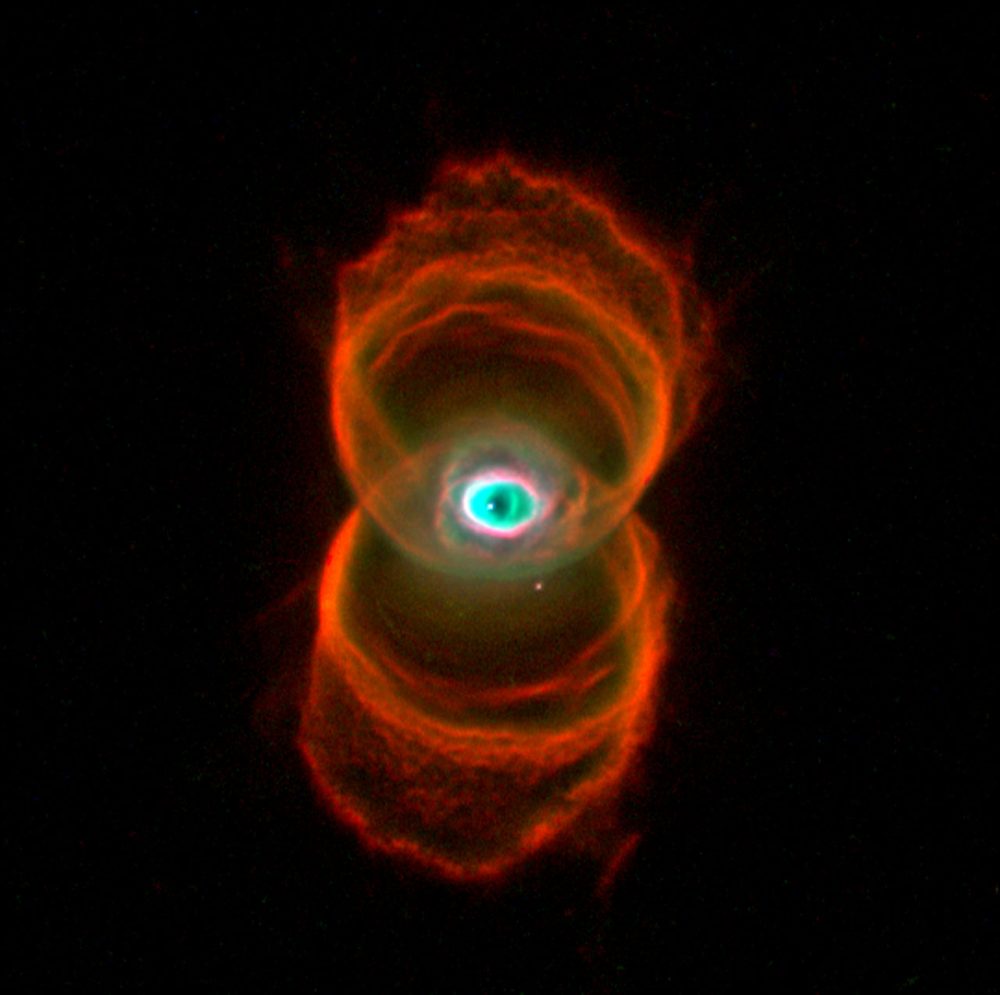Cat's Eye Nebula Age
A planetary nebula forms when Sun-like stars gently eject their outer gaseous layers that form bright nebulae with amazing and confounding shapes.
Cat's eye nebula age. Each ring is actually the edge of a. The alluring Cats Eye nebula however lies three thousand light-years from Earth across interstellar space. The Cat Eye Nebula NGC 6543 is a mythical object from the deep sky of the Northern Hemisphere.
The nebulas structural complexity may be the result of material being expelled from a binary central star but the existence of a binary companion has not yet been. Though the Cats Eye Nebula was one of the first planetary nebulae to be discovered it is one of the most complex such nebulae seen in space. Huggins observations were the first indication that planetary nebulae consist of extremely rarefiedgases.
Structurally it is one of the most complex of the known nebulae. The other nebulosity much fainter was apparently ejected from the star previously every 1500 years or so. It is a Planetary Nebula expanding gas shell ejected from an end-of-life star in the constellation of the Dragon whose age is estimated at only 1000 years and the distance at only 5200 light years.
Approximately 1000 years ago the pattern of mass loss suddenly changed and the Cats Eye Nebula itself started forming inside the dusty shells. Heres my image of the Cats Eye Nebula NGC 6543 in Bi-Colour HαOiii. There he built himself a telescope and started to study astronomy.
The Cats Eye Nebula. The Cats Eye Nebula was discovered by Herschel in the late 18th century. The Cats Eye Nebula was first observed on February 15 1786 by William Herschel.
His early work was devoted to the study of planetary nebulae. The central nebula very bright was formed 1000 years ago. The size and expansion rate of the Cats Eye suggest the nebula is just 1000 years old.
